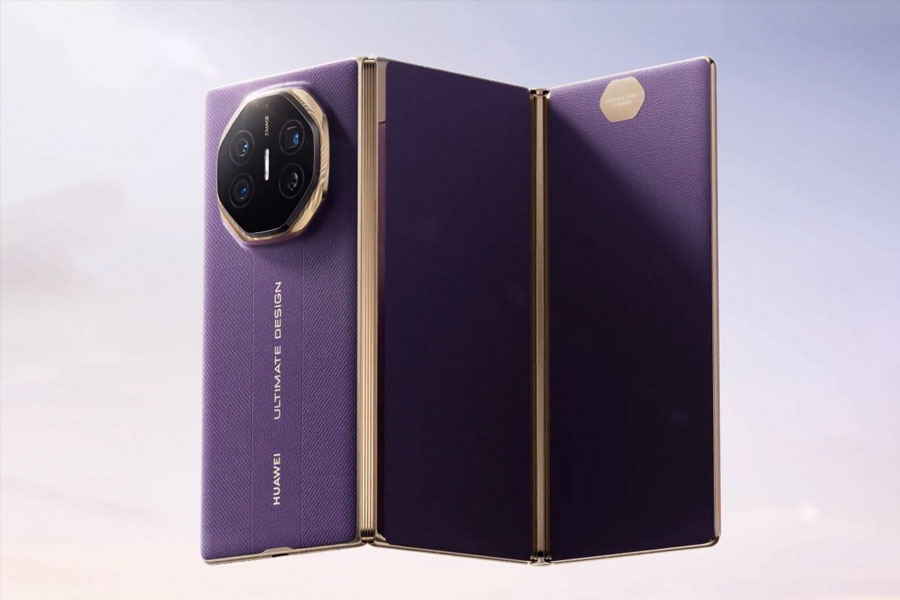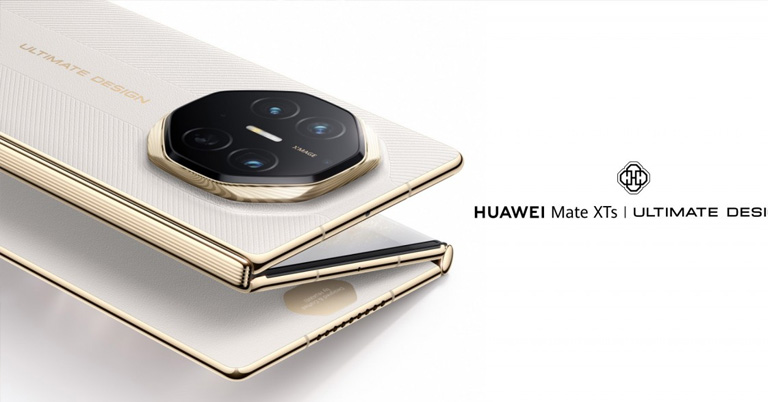No headings found
Huawei just dropped the Mate XTs, their second-gen tri-fold phone. And to my shock, the phone isn't that different compared to its predecessor at all. Its basically same with a few tweaks here and there. Now let's dive in this article, where i will discuss everything about the latest Huawei Mate XTs, including everything about its potential price in Nepal specifications, and availability.
Huawei Mate XTs Overview
The original Mate XT was a phenomenon in China. Over 400,000 units sold, which was wild for something costing nearly three grand. Even IShowSpeed got caught up in the hype during his China trip, buying three units on the spot. The guy was genuinely amazed by the thing, and you could see why. But now, since they have unveiled its successor, i will have to be honest that they indeed [will] lack the same magic as the original, and the XTs feels like Huawei playing it safe. Same design, same form factor, just some internal upgrades that might not justify the premium.
Design and Display

Starting off, you're getting the exact same tri-fold setup as before. The only visual changes are two new colors, purple and white, joining the black and red options. But it's still ridiculously thin at 3.8mm unfolded and 12.8mm folded, weighing 298 grams.
The 10.2-inch LTPO OLED panel remains the star. 3K resolution, 90Hz refresh rate, and up to 1,800 nits peak brightness. When you fold it once, you get a 7.9-inch display, and fully folded gives you a more manageable 6.4-inch screen.
If you weren't catching up with tech news, Tecno also recently announced their own tri-fold concept that's even thinner. Their Phantom Ultimate G Fold measures 11.49mm folded and 3.49mm unfolded, althiough it was only a concept phone.
- Also, read
Performance
At its core is the new Kirin 9020 chipset. Huawei claims 36% better performance than the Kirin 9010, which sounds impressive until you remember what we're comparing against. The 9010 wasn't exactly setting benchmarks on fire. And to be real about this, for nearly $3,000, you'd expect flagship performance that competes with the latest Snapdragon [8 Elite] or Apple chips. But Huawei's stuck with their own silicon due to sanctions, and it shows.
Every variant ships with 16GB RAM. Storage goes up to 1TB, and you're getting HarmonyOS 5.1 out of the box. Which actually remains the part of the problem because HarmonyOS severely limits where this phone can actually be useful outside China.
Camera and Battery
The camera system sees its biggest change with a new 40MP ultrawide sensor at 13mm. It's joined by the same 50MP main camera with variable f/1.4-4.0 aperture and 12MP periscope lens from the original.
Battery wise, you're looking at 5,600mAh with 66W wired charging, 50W wireless, and 7.5W reverse wireless charging. It's decent, but with all the battery tech improvements we've seen lately, this indeed feels a bit conservative, but for the thickness it comes, we can't much complain either.
Huawei Mate XTs Specifications
- Display: 10.2-inch LTPO OLED, 3K resolution, 90Hz refresh rate, 1,800 nits peak brightness
- Processor: Kirin 9020 chipset
- RAM: 16GB (all variants)
- Storage: 256GB, 512GB, 1TB options
- Camera: 50MP main (f/1.4-4.0), 40MP ultrawide (13mm), 12MP periscope (125mm)
- Battery: 5,600mAh with 66W wired, 50W wireless, 7.5W reverse wireless charging
- OS: HarmonyOS 5.1
- Dimensions: 3.8mm (unfolded), 12.8mm (folded)
- Weight: 298 grams
- Colors: Black, Red, Purple, White
Huawei Mate XTs Price in Nepal and Availability
The pricing in China starts at CNY 17,999 for the base 256GB model, going up to CNY 21,999 for the 1TB variant. If this ever makes it to Nepal (which seems unlikely given HarmonyOS limitations), expect it to start at no less than NPR 380,000.
| Huawei Mate XTs | Price in China (Official) | Price in Nepal (Expected) |
|---|---|---|
| 16GB + 256GB | CNY 17,999 | NPR 380,000 |
| 16GB + 512GB | CNY 19,999 | NPR 420,000 |
| 16GB + 1TB | CNY 21,999 | NPR 465,000 |
- Meanwhile, check out our review of the Huawei 70 Pro+
Article Last updated: September 5, 2025






